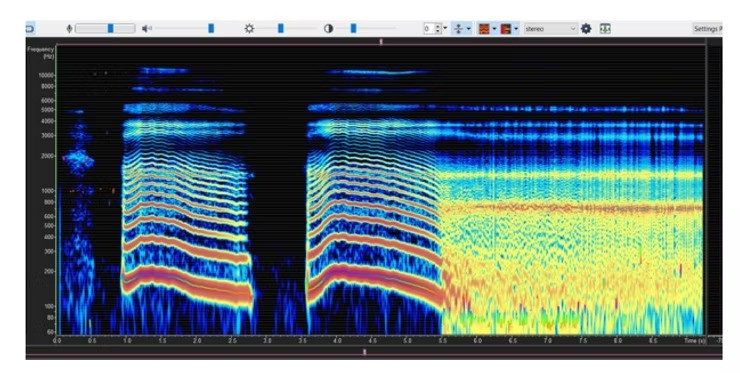In recent years, the term low frequency energy creaky voice has gained attention in both linguistic research and vocal performance discussions. Creaky voice—sometimes called vocal fry—is a phonation style characterized by a low, popping, crackling sound produced when the vocal folds vibrate slowly and irregularly. While it is often
associated with modern speech styles, especially among younger speakers, creaky voice has deep physiological and acoustic roots. One of its defining features is the presence of high low-frequency energy in the voice signal.
Understanding how low frequency energy shapes the creaky voice can help speakers, singers, and vocal professionals develop healthier and more intentional vocal habits.
What Is Low Frequency Energy in Voice?0
Every voice carries a spectrum of frequencies. The lowest part of that spectrum—typically below 100 Hz for women and 70 Hz for men—represents the low frequency energy in the sound wave. This portion of the spectrum gives the voice qualities such as depth, fullness, and warmth.
In creaky voice, the vocal folds vibrate at very low rates, often producing irregular pulses between 20 and 50 Hz. This creates an acoustic profile dominated by low frequency energy, resulting in the characteristic gravelly or popping sound.
How Creaky Voice Produces Low Frequency Energy
The physical mechanism behind creaky voice involves three main components:
1. Tight, Slackened Vocal Fold Configuration
During creaky phonation, the arytenoid cartilages press the back of the vocal folds together firmly while the front edges remain relatively loose. This leads to small, irregular openings that create slow vibrations.
2. Low Subglottal Pressure
A lower amount of air pressure from the lungs forces the vocal folds to vibrate at slower rates. Less airflow supports the emphasis on low frequency components.
3. Irregular Glottal Pulses
The popping sound in creaky voice comes from irregular, discrete glottal pulses. Each pulse creates a burst of low frequency acoustic energy, making the voice sound rough.
These elements combine to produce a vocal tone with strong low frequency dominance.
Why People Use Creaky Voice
Creaky voice isn’t inherently negative or harmful. In fact, many people use it naturally and unconsciously. Here are some common reasons:
1. Social and stylistic expression
In some speech communities, creaky voice signals confidence, relaxation, or modernity. Many English speakers use it at the ends of sentences, where intonation naturally drops.
2. Vocal emphasis
Speakers may use creaky voice to highlight a phrase, express emotion, or indicate the end of a thought.
3. Identity signaling
In linguistics, creaky voice can mark gender, region, or group affiliation. Its association with certain subcultures—especially online influencers—has made it a recognizable vocal trend.
Is Low Frequency Creaky Voice Harmful?
Creaky voice in moderation is not usually harmful. However, constant reliance on low frequency energy creaky voice can become problematic.
Potential Risks:
Vocal fatigue: The pressed configuration of the vocal folds can cause tension if used excessively.
Strain and dryness: Low airflow during creaky phonation may lead to dryness or irritation.
Reduced vocal clarity: Heavy creak can make speech harder to understand.
For healthy speakers, occasional creaky voice is normal and safe. The concern arises when it becomes the default voice quality across most conversations.
Managing and Balancing Creaky Voice Usage
If you find yourself using creaky voice unintentionally or excessively, the following strategies can help balance your vocal production:
1. Increase Breath Support
Low airflow contributes to the slow vibrations that produce creak. Using steady, supported breathing encourages smoother vocal fold oscillation.
2. Hydrate and Humidify
Moist vocal folds vibrate more freely, reducing tension that contributes to creak.
3. Warm Up the Voice
Gentle glides, lip trills, or humming help bring the voice into a more resonant, mid-frequency range.
4. Practice Pitch Elevation
Creak happens at the lowest end of the vocal range. Slightly raising your speaking pitch can reduce creaky phonation.
5. Consult a Speech-Language Pathologist
For persistent, unwanted creaky voice, professional guidance can help correct underlying habits.
Creaky Voice in Music and Media
Low frequency creaky voice is not limited to speech. Many singers use controlled creak for stylistic effect—especially in pop, R&B, and indie genres. It adds emotional depth, tension, or intimacy to a phrase. Podcasters and radio hosts also sometimes adopt low frequency qualities to sound more grounded or authoritative.
When used intentionally, creaky voice becomes a powerful expressive tool rather than a vocal issue.
Conclusion
The connection between low frequency energy and creaky voice offers a fascinating look into how human speech is shaped by physiology, acoustics, and culture. While creaky voice naturally emphasizes low frequency components and can carry stylistic appeal, understanding its mechanisms helps ensure healthy, sustainable vocal use. Whether you’re a speaker, singer, or simply curious about voice science, recognizing how low frequency energy influences creaky voice can deepen your awareness of how your vocal instrument works.